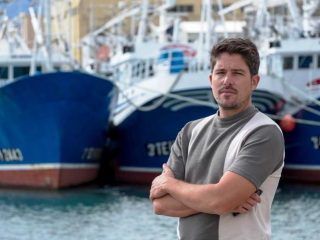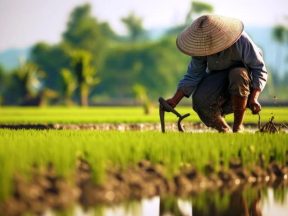Important political events will mark the Asian panorama in 2019 while the evolution of strategic and economic questions will play a role in regional and global relations. Once again Chine will take the lead.
Again in 2019 the gaze of the world will be turned towards China, the economic colossus which, in the second half of 2018 began to slow down appreciably due to duties imposed by the Trump administration amounting in all to a total of 220 billion dollars, almost half the value of US imports from China, and to which Beijing has reacted by imposing duties on almost all imports from the USA, worth 110 billion dollars.
The plan to accomplish the reforms necessary to stabilise the country desired by President Xi Jinping, economic-productive restructuring and the drastic dimensioning of the “shadow” economy which sustained development during the past twenty years at the cost, however, of wide social divergence, is now faced with a slow-down in exports and the growing protectionist tendencies in the West. The gamble of greater openness, coherence and transparency in the Chinese system, as demanded by international investors who are ready for a massive return of the great Far-Eastern country, still finds itself faced with the regime’s need for control and, in an ever increasingly open manner, for strategic supremacy in areas that Beijing sees as its competence or priority.
It is worth noting that the 70th anniversary of the founding of the Chinese People’s Republic (in October) occurs in a special year, in a complex situation and that, through its management, China gambles on its future which involves guaranteeing general well-being and adequate assistance for a population that has reached the peak of its demographic growth and is now ageing, redefining the work market.
The year opens problematically for Taiwan after the defeat in local elections on 24 November 2018 of the government party and the recovery of his pro-Beijing opponent, the Kuomintang. The dimensioning of the progressive democratic party of President Tsai Ing-wen opens a time of new uncertainty in a situation which, as recently as in 2016, seemed to have relegated the succeeding nationalist party of Chiang Kai-shek to the role of a historical relic, a turning point reached two years ago in the guise of independence that excluded any further dialogue with Beijing towards a “two-system country”, for many close to de facto independence, with the risk of a military intervention by continental China in the “rebel province”.
In question there is also the real potential of the island whose democratic, social, economic and cultural unity will be sorely tried, both by relations with the continent and by new interior balances.
The New Year will also be a year of transition for Japan, with economic-social policies that it finds hard to implement and with the attention of both businessmen and people focussed on two questions. The first is the foreseen increase of 10 per cent on consumer tax. This was budgeted for November 2019, after a slide of three years and almost five since the move from 5 to 8 per cent on 1 January 2014. This increase is deemed necessary in order to deal with the public debt which reached 236 per cent of GDP (152 per cent, after subtracting government assets) and the foreseen increase in social spending despite the risk of a contraction in growth. The funds have already been ear-marked to satisfy ever more pressing needs. First on the list are the free pre-schools and other initiatives to encourage Japanese people to have more children and the guarantee of greater possibility for mothers to continue working in an almost dramatic situation of population reduction.
The second question that will deeply affect the Japanese will be the abdication of Emperor Akihito on 30 April, the first to do so for two centuries. The designated heir is Prince Naruhito who, on a date still to be established and with an inflexible and antique ceremony, will become the 126th Emperor of an uninterrupted dynasty. The background includes not only the frail health of Akihito but also his convinced pacifism, shared by the majority of the population. This is in contrast with the more interventionist policy of the government led by Shinzo Abe who intends to change the Constitution to make it possible for the forces of self-defence to participate directly on foreign fronts if requested. A real pacification of the Korean peninsula would render this commitment less urgent but it is unlikely that he would abandon it.
It is foreseeably a year of transition also for South Korea which, though it now views the North more optimistically, has to deal with lower production, youth unemployment, the need to tackle marginalisation starting from the elderly, some of whom are consistently without any pension or assistance. There is also the gap in work opportunities, in a country that sees itself as well off, happy and a promoter of technology widely diffused in Asia but marked by deep divisions such as the role of women and corruption in a society bound by Confucian concepts in which even Christianity, triumphant up to a few years ago, now seeks a more up-to-date role and definition.
There are especially two questions which, for two years now, creating excellent victims in the world of politics and business, have become central to the action of civil society and the judiciary: the attenuation of the excessive power of industrial-financial giants (chaebol) over public life and the moralisation of public life and the end of the political-business marriage at the centre of great scandals. As well as these, there is the matter of peace with neighbouring North Korea, a priority in the programmes of Catholic President Moon Jae-in.
In Thailand, whose turn it is to preside over ASEAN (Association of South-East Asian Nations), it is expected – unless there is an about-turn at the last minute – that there will be a round of elections with unforeseeable results on 24 February. The regime that took power after the coup in May 2014 did all it could to black out the entire run-up to the elections to exclude any credible opposition and, at the same time, imposed a twenty-year “road map” to consolidate the grip of the armed forces on the sharing of power with the aristocracies and big business. However, the opposition showed itself more than once last year to be growing, especially among the youth, contrasted by a “soft” repression that moves in step with the low tendency to rebel of the Thais and with the capillary infiltration of the regime in all sectors of public life. Even though censorship has been strict and very harsh laws have been enforced – such as that in defence of the monarchy – the internet has become a formidable vehicle for ideas and complaints, both concerning the inability of those in government to re-launch the stalled country and to keep open a form of detached from traditional movements and parties but which is rather the expression of paths of renewal, of struggles against corruption and privilege that goes against a strongly stratified socially and culturally backward situation.
Quite different and certainly more open to achieved democracy, the biggest economic and demographic power in south-East Asia, Indonesia goes to the polls on 19 April to elect a new parliament and, for the first time contemporaneously, its Head of State. These polls are important and not only because they are the first “double election” which many hope will consolidate and prelaunch the policies of relative openness, decentralisation and development of the final four years of President Joko Widodo. The general situation of the country and, once again, its desire for development to be confronted with its Islamic identity, its aspiration to “unity in diversity” to be weighed against integralist forces, will be central to the choice of the voters but also to the interests of the international community during the coming twelve months.
Of less importance but certainly indicative will be the elections in May in the Philippines – elections for the total renewal of the Camera of Deputies and the partial renewal of the Senate. Here are many motives for an election which, in the Philippine context, always presents problems and issues. In question is also the judgement of the presidency of Rodrigo Duterte in his fourth year and his high-impact, even lethal campaigns – such as that against drug users – carried out prejudicially and with little regard for democracy. It has been subjected to severe criticism by the Church, by broad sectors of civil society and many diplomats. The background is one of a country that grows on alternate days but which, overall, makes heavy work of finding direction and stability, still fighting against various guerrilla movements and the danger of Jihadism in the south of the country. One of the gambles in 2019 will be that of concretising the peace agreement signed in 2018 which has at its centre far-reaching autonomy for its regions with s strong Islamic presence.
It is difficult to see substantial changes taking place in the situation of uncertainty that prevents the economic resurgence of Myanmar whose population remains one of the poorest in Asia despite the tendency towards improvement in profits and the standard of living. While the residual power of the military and the rekindling of the situation in areas inhabited by minorities, including the Moslem Rohingya in the western state of Rakhine, are certainly “thorns in the side” of the Myanmar government, it is also true to say that it causes dialogue to start between the government and ethnic minorities with the purpose of bringing lasting peace to the country. This alienates part of the massive investment foreseen and discourages international openness towards the civil government which remains under the control of the generals. For some time, relations between the government of Naypiydaw and Beijing, the traditional ally of the military regime until, have cooled and dialogue with the de facto executive led by Aung San Suu Kyi, winner of the Nobel Peace Prize and now national councillor and foreign minister, seems to have stalled after the suspension or reduction of mining and hydraulic projects and infrastructure made in China.
In the Indian sub-continent, no particularly great shocks are expected in Bangladesh, a country that is gathering pace on the level of incomes, employment and the control of militant and terrorist Islam.
Not very different but a step or two ahead, the situation in India, whose outgoing government led by the nationalist Bharatiya Janata Party and its leader Narendra Modi, will seek confirmation in the elections in May for the Lower House of Parliament (Lok Sabha). The background is five years of economic growth, but also minorities on the defensive due to Hindu extremist action and controversies involving discrimination. The Bharatiya Janata Party is not expected to lose but the voting could mark a turn from the almost plebiscite preference accorded since 2013. Obviously, there is much at stake in a country that is gaining in strength and soon wants to challenge its Chinese rival, relying especially on its demographic resources, but which, in order to enjoy international support and prestige, must be convincing in the field of progress, equality and public morality.
The situation of Pakistan has for a long time been problematic. Identified as a receptacle of religious extremism and Islamic terrorism, the great country, a rival of India and, like it, a nuclear power, will reply much if not entirely on the charism and international profile of Imran Khan, an ex-cricket champion and leader of the Pakistan Tehreek-e-Insaf , the winner of the elections in July of last year.
The task is hard for Khan who must join combat on several fronts: underdevelopment, religious and ethnic sectarianism, political litigiousness, the virulence of religious extremism with its two militant associates, Jihadism and Talibanism.
Taliban extremism is also the great unknown in Afghanistan where, after the renewal of parliament in the October elections, and, if it is not necessary to postpone or cancel them, the presidential election on 19 April where the residual possibility of stability and development will be at stake – something impossible without sharing power with the Taliban who, in 2018 gained territory and negotiating power – as will be the future of international military protection. In brief, it is a country at a crossroads, with little certainty – and backwardness is one of them – and many dangers.
Stefano Vecchia











